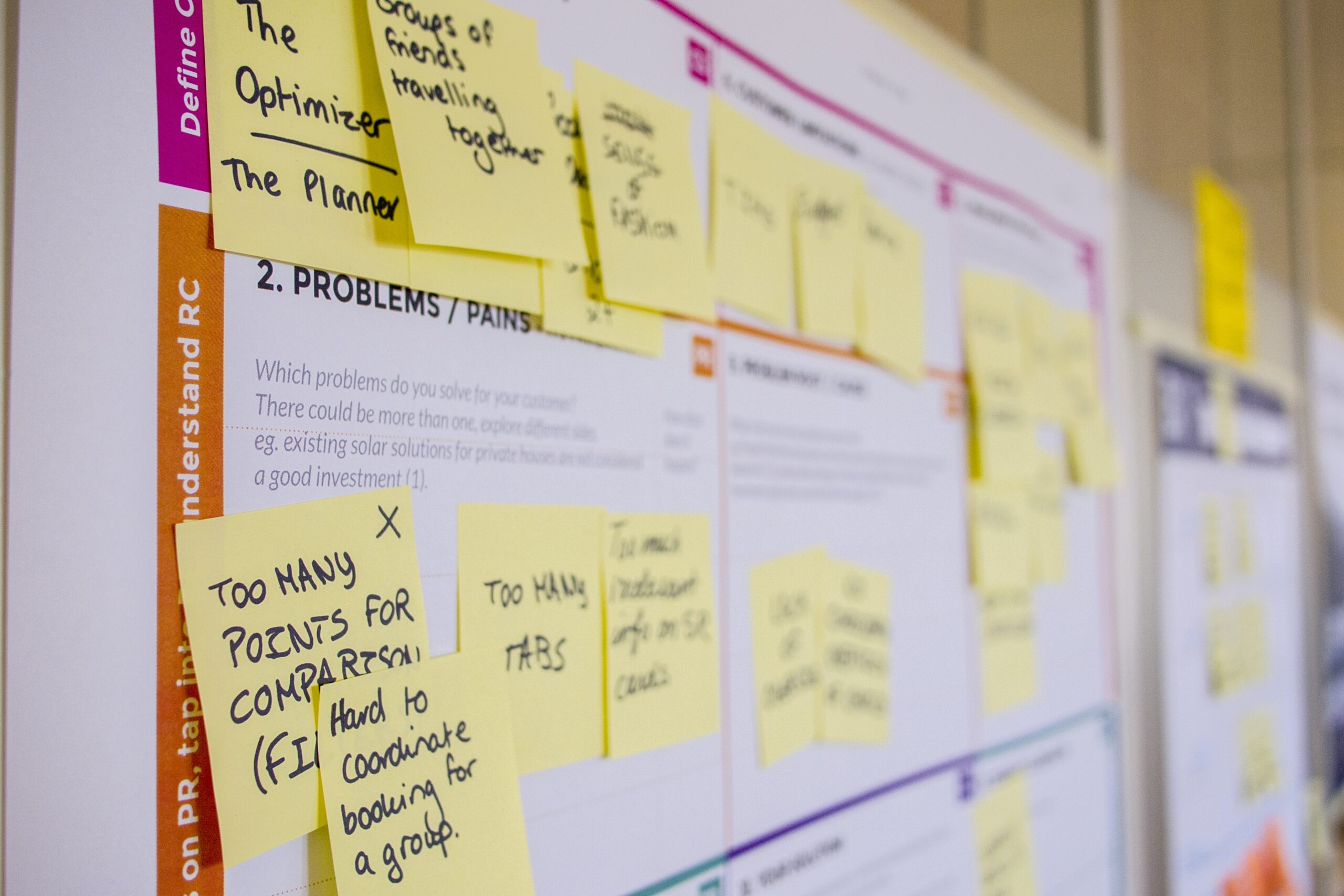“We didn’t think you’d notice the difference,” the guys said when they came back from the store as they put the Schnucks-brand tonic water on the granite countertop. “It’s just like Fever Tree, isn’t it?”
Oh, no, gentlemen. No, it is not. Yet, we were all too tired from the week to go back out to the store. So we took what we had and used the house-brand tonic water for our simple gathering on the patio.
I think when we get unhelpful feedback, it can be like getting the off-brand tonic that’s meh when what you want is sparkling, crisp Fever Tree. (Side note, I would drink just Fever Tree on ice and be fully content. #notsponsored 😂)
Unhelpful feedback feels disjointed and awkward. Unhelpful feedback means little, so it falls flat, and no one takes any action…which leads to more frustration, disengagement, and often a team member searching LinkedIn for a new position.
What we all want is the type of feedback that is specific, meaningful, and actionable. (Last week, I gave you the five-step infinity loop to give helpful and effective feedback. Like good bitters, it’ll enhance this mini-training if you read it).
Great feedback feels clarifying and freeing. Like naming that song that you heard, but the title was just out of reach in your memory. Or identifying that thing hanging around in the air that didn’t feel quite right, but it was just hanging in your blind spot. The Aha! Now I know what the actual problem is!

Unfortunately, most people think a dispassionate, “just the facts, ma’am” approach is the way to go. When really, that’s just the store brand version that can do almost more harm than good.
Effective feedback is absolutely personal and passionate. It’s specific to the person in a way that is passionate for their good.
Since step one of the feedback infinity loop is relationship, you have to understand yourself as much as you try to understand the other person. The most effective self-awareness tool I use is the Enneagram. The personality framework shows us why we act, think, and feel the way we do as we make our way in the world. Because how you see the world 100% impacts how you give (and receive) feedback.
The Enneagram provides you with the advantage for seeing the different perspectives on each side of the feedback table. It’s how you transform your generic approach into top-shelf feedback that is insightful, effective, and caring. You’re like the Fever Tree of Feedback.
Better feedback by Enneagram Type
Enneagram Eights giving feedback:
- Don’t just say, “well, here’s your problem” without offering a solution. Even better, ask if they’d like a suggestion for a solution.
- Remember others might need softer language. Be direct, but practice being less forceful.
Giving feedback to Enneagram Eights:
- Be as direct as possible. And offer the bottom line upfront.
- Model vulnerability and transparency, but be strong in your perspective. Eights will respect the back and forth if they feel an equal partnership.
Enneagram Nines giving feedback:
- Feedback can bring connection if you are honest and straightforward (even though it feels wildly uncomfortable to you.).
- Choose clear examples without long stories. And you may want to practice beforehand.
Giving feedback to Enneagram Nines:
- Just because a Nine nods does not mean agreement. Ask directly for their opinion.
- Provide adequate time to process feelings and listen completely to their perspective.
Enneagram Ones giving feedback:
- Avoid dualist, either/or, and judgmental language — both words and body language.
- You can’t appease your inner critic by criticizing someone else. Your performance bar is likely too high for yourself as well as others. Make sure you’re using a clear, objective measure.
Giving feedback to Enneagram Ones:
- They’re already highly self-critical. No need to pile on examples. One or two observations based on observable evidence should suffice.
- Acknowledge their work ethic, diligence, and intent.
Enneagram Twos giving feedback:
- Don’t allow your own need to keep everyone feeling good to obscure your language. Be as simple and direct as you can.
- Remember just because it feels awkward does not mean it’s unhelpful or bad.
Giving feedback to Enneagram Twos:
- Relationships are highly valuable, so emphasize behavior and actions. Reassure them this is not a rejection of their other work or them as a human. In fact, you want them to do well and succeed.
- Close by specific appreciation of the good work they contribute and their impact on the community of the team.
Enneagram Threes giving feedback:
- Check your sarcasm and tendency to be a touch harsh on less-than-excellent work. Less hyperbole, more observation.
- Separate the person’s worth from their work and make space for emotions.
Giving feedback to Enneagram Threes:
- Be the partner and cheerleader. You’re the ally wanting to help them achieve success, not the roadblock to the next achievement.
- Recognize and reward the behaviors and work you want them to continue.
Enneagram Fours giving feedback:
- Go for offering wisdom and insights. You see from a different perspective, rather than overly critical. But watch out for self-referencing too much.
- While you may enjoy the prick of negative emotions, most people don’t. Offer positive comments as well.
Giving feedback to Enneagram Fours:
- Stay focused on the observations and data. Fours can start internalizing and head into self-victimization that they can never change.
- Allow space for their emotions and reinforce your care and belief in them. Demonstrate support for their plan for change.
Enneagram Fives giving feedback:
- Others may respond with more emotion than you might. Stay present rather than detaching.
- Practice intellectual empathy. Remember the first time you learned something new? It’s too much to have every piece of data. Give them what they need to understand; otherwise, overwhelm and defeat set in.
Giving feedback to Enneagram Fives:
- Have data and facts that are observable and detailed, preferably measurable.
- Provide clear next steps, but do not require decisions in the initial conversation. Rather set a time to reconvene to make choices.
Enneagram Sixes giving feedback:
- Make sure your details do not overwhelm the big picture of what you’re trying to communicate. People need less context than you do.
- Keep your own anxiety in check. Don’t create future problems yet. Focus on the present concern.
Giving feedback to Enneagram Sixes:
- Reassure them this is contained and easily resolved. They tend to catastrophize and go from zero to 60 with worst-case scenarios.
- Listen and validate their concerns and what-ifs. Don’t dismiss out of hand.
Enneagram Sevens giving feedback:
- Don’t run to the positive or rush through just to avoid the discomfort of the specific issue. This diminishes the impact and understanding.
- Avoid trite phrases and toxic positivity. Create clear action steps to create change.
Giving feedback to Enneagram Sevens:
- Make space for brainstorming options and exploring ideas. Demonstrate your willingness to think outside the box.
- Help them by recapping action steps with clear responsibilities and timelines.

These 36 Enneagram tips will get you started on personal and passionate feedback. The type of feedback that builds trust and creates change.
If you’ll indulge my Fever Tree analogy, these ideas are just a sip. A tiny taste of the power of the Enneagram to improve your leadership. The more effective way to lead that stops the second-guessing and returns excitement to how you work with people.
In February, I’m hosting the Joyosity™ Retreat that will make space for you to explore far more than just how to give better feedback based on the Enneagram. It will be the path from worn out and unsure to excited and connected as a leader. So you can lead a great team and create a great career for yourself. If you want to know more, just contact me and say retreat.
For today, I want so much more for you than generic, flat feedback. Bookmark this blog. Forward it to your people so everyone starts to give meaningful feedback that builds trust, increases engagement, and cultivates the positive culture we all want at work. Even more effective, bring me in as a speaker to help you make it come alive and actually implemented!

COMMENTs:
0